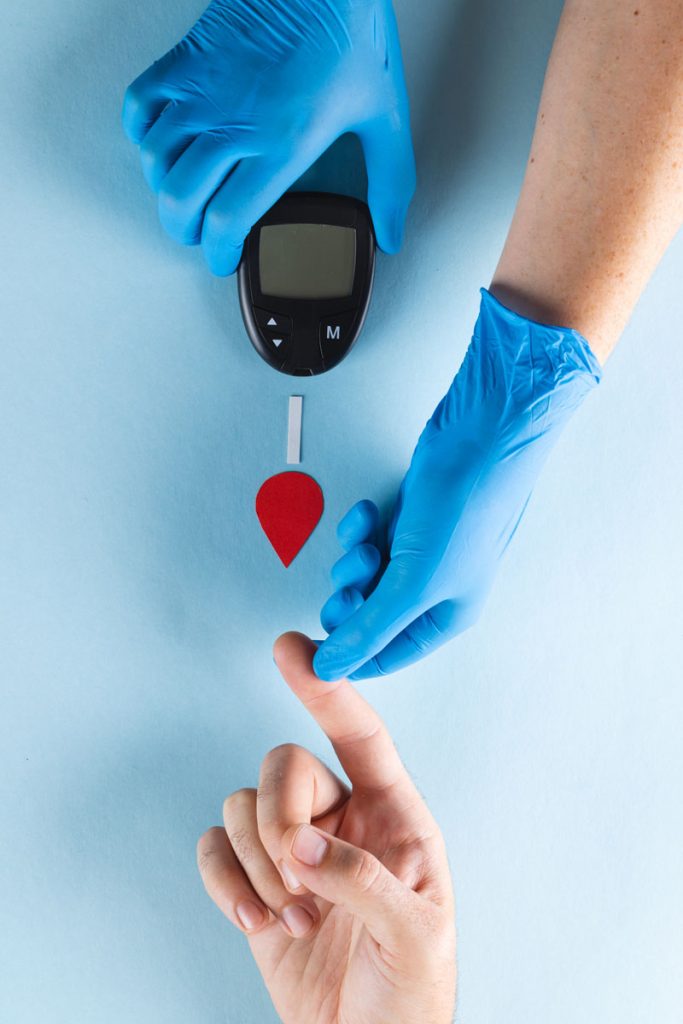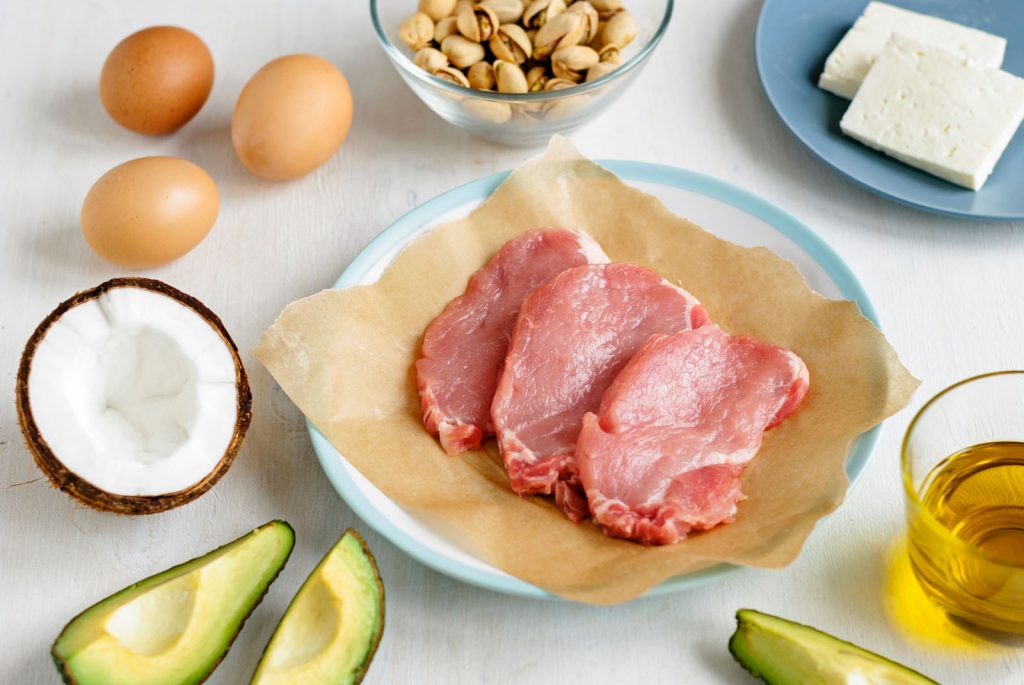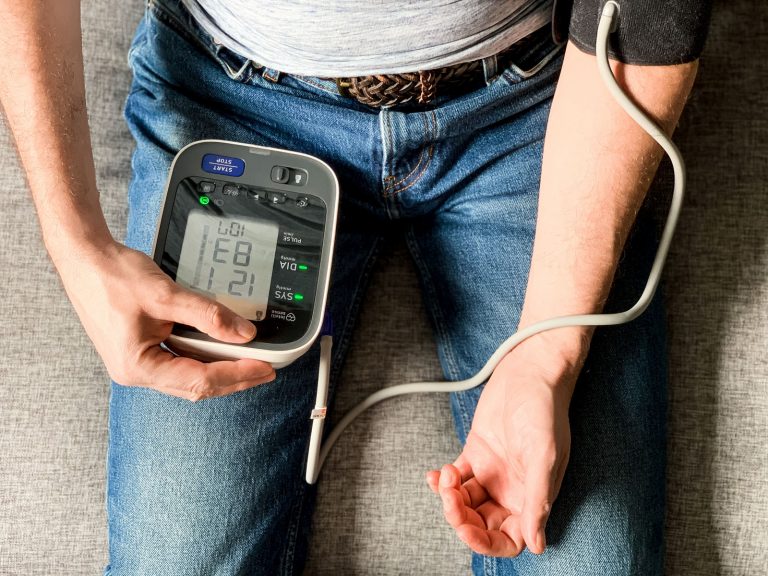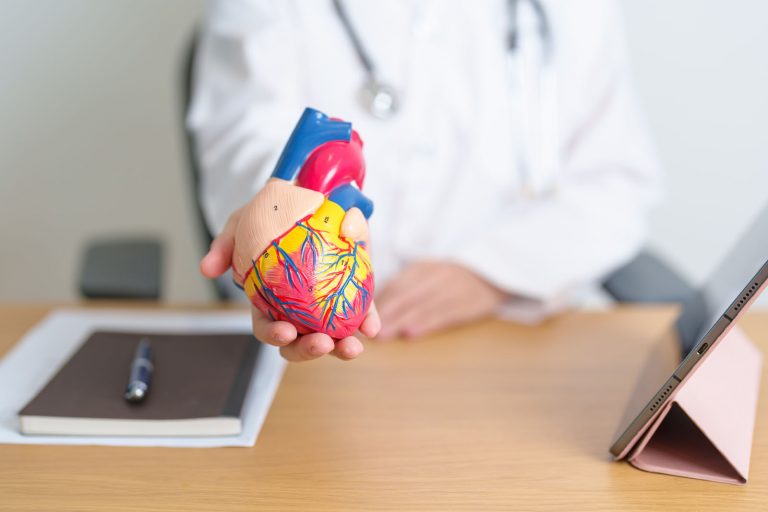Learn how to lower blood sugar naturally and which are the best diets for high blood sugar. Prevent diabetes & reverse insulin resistance with our expert tips.
What is The Best Diet for High Blood Sugar? Reduce Blood Sugar Naturally

Key Highlights
- High blood sugar is often linked to insulin resistance, which can lead to pre-diabetes and type 2 diabetes if not managed early.
- Whole, unprocessed foods are key—diets like the Mediterranean, Paleo, and ketogenic diets can help stabilize blood sugar and improve insulin sensitivity.
- The glycemic index (GI) matters—choosing low-GI foods helps prevent blood sugar spikes and crashes.
- Intermittent fasting can improve blood sugar control by enhancing insulin sensitivity and promoting fat metabolism.
- Berberine and other natural supplements can support glucose metabolism, but should be used under professional guidance.
- Sustainable, long-term habits are essential—it’s not just about dieting, but about finding a way of eating that you can maintain for life.
Introduction
Many of my patients come to me saying their doctor has told them their sugar levels are up, or they need to drop some weight. Unfortunately, most doctors don’t have the time to walk their patients through the changes they need to make to understand this problem and prevent diabetes. This is where the support a nutritionist or functional medicine practitioner can offer becomes invaluable.
The good news is you can lower your blood sugar levels naturally (and prevent significant health complications such as heart and kidney disease, high blood pressure, nerve damage, and vision loss) with some simple lifestyle and dietary changes.
This article explores the best diets and foods for reducing your blood sugar. But first- let’s get an understanding of how blood sugar works, and what might be contributing to your elevated levels.
Understanding Blood Sugar Disorders
Blood sugar disorders occur when there are issues with how your body controls glucose. Glucose is the main source of energy for your cells. Insulin is a hormone produced in the pancreas which helps glucose enter cells. Blood sugar disorders occur when the body cannot make or utilise insulin effectively- which leads to elevated sugar in the blood surrounding your cells.
High blood sugar is also called hyperglycaemia, and long-term it can lead to serious health issues like pre-diabetes and diabetes. Contrary to common belief, not all cases of “high” blood sugar are the same. Understanding the various types of blood sugar disorders helps with early detection, and individualised and effective management.
Why Is My Blood Sugar High?
As mentioned, one cause contributing to high blood sugar is insulin resistance or reduced insulin sensitivity. Insulin sensitivity is how well your cells respond to insulin. Insulin is the hormone that helps move glucose from the blood into your cells for energy. When cells are less responsive or insulin resistant, they struggle to absorb glucose from the blood. This leads to blood sugar staying elevated for longer than usual after meals. When this occurs, your pancreas works harder and to make more insulin in order to keep your blood sugar levels normal. At first this can help, but over time the pancreas might struggle to keep up producing this much insulin- which leads to high blood sugar levels and eventually pre-diabetes.
Recognising and managing insulin resistance to keep blood sugar levels stable is vital to prevent serious long-term health issues.
Diabetes: Types and Treatments
Diabetes mellitus is long-term elevated blood sugar or hyperglycaemia, diagnosed as fasting blood glucose ≥7.0 mmol/L. There are two main types: type 1 and type 2.
Type 1 diabetes is an autoimmune disease. The bodies immune system wrongly attacks and destroys the beta cells in the pancreas that make insulin, leading to unmanaged high blood sugar. In type 2 diabetes (which is a lifestyle disease), the cells become resistant to insulin over time. This means that the cells do not respond to insulin properly, leading to elevated blood sugar levels, and insufficient energy inside the cells for function. As I mentioned earlier, the cells which produce insulin may also become impaired and struggle to produce enough insulin, which exacerbates the blood sugar issue.
Some herbs and nutrients, and lifestyle changes including physical activity and losing weight, can all help to improve insulin sensitivity. If your body can control blood sugar more effectively, you may be able to prevent diabetes.
Pre-Diabetes: Impaired Glucose Tolerance and Impaired Fasting Glucose
Pre-diabetes is higher than normal blood sugar levels- but not yet high enough to be type 2 diabetes. This is a warning sign that your body is starting to have trouble managing excess sugar. With inaction, pre-diabetes can turn into type 2 diabetes.
There are different types of pre-diabetes- including impaired glucose tolerance (IGT) or impaired fasting glucose (IFG). It’s important to differentiate between these if your blood sugar is elevated. IFG is often related to increased insulin resistance in the liver and associated with non-alcoholic fatty liver disease (now called Metabolic Dysfunction-Associated Steatotic Liver Disease). IGT is often poor muscular insulin sensitivity, and many patients experience fluctuating energy with this condition.
It’s important to catch pre-diabetes early. The tests run by your GP are not very sensitive to the first changes in blood sugar regulation mechanisms. This is where a functional medicine practitioner plays an important preventative role- particularly if you have risk factors for pre-diabetes, like family history, obesity, or a sedentary lifestyle. Understanding the level of impairment of glucose metabolism is important. I use timed post-prandial glucose monitoring with my patients to determine what support and specific advice they may need.
The good news is that pre-diabetes can often be reversed. Reversing pre-diabetes and managing blood sugar spikes can be achieved by weight loss, eating a balanced diet low in processed and sugary foods, and being active on a regular basis. You can read more about reversing pre-diabetes in my article here.

What Diet Is Best For High Blood Sugar
So what is the best diet for high blood sugar? Some eating plans work better than others for achieving healthy blood sugar levels and improving insulin sensitivity- and these are often the diets which focus on whole, unprocessed foods. Giving your body the right nutrients to work well also helps keep your blood sugar at target levels, and lowers the chance of long-term health problems.
Reduce Blood Sugar- The Mediterranean Diet
The Mediterranean diet is well-known for its heart-health benefits. However, it is also good for controlling blood sugar. The Mediterranean diet focuses on whole, minimally processed foods that include fruits, vegetables, legumes, whole grains, healthy fats, and lean proteins.
The fibre found in fruits, vegetables, legumes, and whole grains slows the speed at which sugar is absorbed by your body, which can reduce insulin levels and sudden spikes in blood sugar.
Oily fish are also an important part of this diet. They are high in omega-3 fatty acids, which are good for preventing heart disease, and can help reduce inflammation. Metabolic inflammation is linked to insulin resistance.

Paleo Diet: Ancestral Eating
The Paleo diet is based on the eating habits of our ancient ancestors. It focuses on whole, unprocessed foods that hunter-gatherers would have eaten. This low carb diet includes lean meats, fish, fruits, vegetables, nuts, and seeds. It does not include grains, legumes, dairy, processed foods, or added sugars.
The paleo diet focuses on protein and healthy fats helps to manage blood sugar levels. Studies have
shown a Paleolithic diet can improve glycemic control and cardiovascular risk factors. By cutting out processed foods and refined sugars, the Paleo diet may also help with weight loss. This can also lead to improved insulin sensitivity and blood sugar control.
However, while the Paleo diet promotes healthy foods, cutting out entire food groups like dairy, legumes and whole grains can cause nutrient gaps if not managed well. It’s a good idea to talk to a nutritionist to confirm if the Paleo diet is right for you and help you create a balanced meal plan which ticks all the boxes.
How Can I Reduce Blood Sugar? The Ketogenic Diet
The ketogenic diet is a low carb, high-fat eating plan. It has become popular because it may combat weight gain and support blood sugar control. This diet reduces carb intake and increases fat consumption. By doing this, it changes the energy source and how they are used in your body. Instead of using glucose, the body starts using ketones made from the breakdown of fat. This can help stabilise blood sugar levels, and promote fat loss.
As a low carb diet, the ketogenic diet cuts out sugary foods, processed grains, and starchy vegetables which can help with weight management and keeping blood sugar in check. A recent study demonstrated that low-carb diets can quickly bring elevated glucose levels back to a healthier range.
However, it’s important to note that the ketogenic diet can be very strict and hard to follow for a long time- and many ketogenic foods can be unhealthy too! It’s vital to ensure you get enough nutrients to stay healthy while on this diet.
Low Glycemic Index Diet: Stabilising Blood Sugar
Learning about the glycemic index (GI) can help you navigate blood sugar management. The GI index shows how fast a food with carbohydrates raises your blood sugar level. Foods with low GI are digested slowly. This means they cause a gradual rise in blood sugar. This helps prevent sharp spikes and keeps your energy steady.
Low GI foods include non-starchy veggies, legumes, whole grains, certain fruits, and healthy fats. By choosing low GI options, you can manage blood sugar levels better, and lower the chances of pre diabetes and insulin resistance.
Eating a low GI diet is easy! You can make simple changes, like picking brown rice instead of white rice, or choosing berries over sugary cereals.

Intermittent Fasting: Timing Meals To Prevent Diabetes
Unlike regular diets that tell you what foods to eat, intermittent fasting focuses more on when you should eat. Studies show fasting can increase insulin sensitivity. It encourages your body to stored glucose and fat for energy. Intermittent fasting can help you eat fewer calories and manage your weight.
It’s important to talk to a nutritionist before you start intermittent fasting. This eating pattern is not right for everyone- particularly not anyone who is suffering from any kind of physical or emotional stress.
Blood Sugar Lowering Supplements
In additional to dietary change, certain nutrients and herbs can play an important role in lowering blood sugar levels and improving insulin sensitivity. In some case, I add these blood sugar-lowering supplements to my patients regimes when they need extra glucose metabolism support.
Please note: it’s important to talk to a healthcare professional before you start taking any supplements. They might interact with medications, or could be unsafe in combination with some health issues.
Berberine: Glucose Regulator
Berberine is a natural compound which is found in some species of plants. Research shows that berberine may help lower blood sugar levels as effectively as some diabetes medications. Berberine works in several ways, such as improving insulin sensitivity, reducing glucose production in the liver, and slowing down how carbohydrates break down in the digestive system.
In addition, berberine may help lower cholesterol and triglyceride levels, making it useful for metabolic syndrome (you can read more in my article about metabolic syndrome here).
It is important to note that berberine is so effective at blood sugar reduction, that it can enhance diabetic medications, and possibly lead to low blood sugar (hypoglycemia). Before adding berberine to your routine, it’s essential to talk with a healthcare professional.
Inositol: A Vital Supplement for Insulin Sensitivity
Inositol is a natural compound found in many foods. Inositol is important for various body functions, especially in controlling blood sugar. Although it is often thought of as a B vitamin, inositol is actually a sugar alcohol that helps cells communicate, mainly regarding insulin. It works as a signal carrier, helping insulin connect with cells. This improves how these cells react to insulin and subsequently improves insulin sensitivity.
Inositol is especially useful for people with insulin resistance. Research suggests that inositol can lower serum insulin and improve insulin resistance around two times more effectively than the common pharmaceutical medications metformin and pioglitazone.
Psyllium: Blood Sugar Lowering Food
Psyllium comes from the husks of the Plantago ovata plant, and it contains a lot of fibre. Soluble fibre can dissolve in water, and forms a gel-like substance in the digestive system. This gel slows down how fast we digest food- and also reduces the speed at which sugar enters the bloodstream!
Psyllium has other metabolic benefits including supporting healthy cholesterol levels by binding to bile acids (which contain cholesterol), and improves digestion and gut health by feeding beneficial gut bacteria.
Natural Ways To Lower Blood Sugar: Resveratrol
Resveratrol is a natural substance found in grapes, berries, and red wine. Resveratrol is getting a lot of attention for its possible health benefits, including antioxidant actions and benefits for blood sugar control. As an antioxidant, resveratrol can protect our cells from free radical damage. Free radicals are unstable particles that can lead to inflammation and stress in the body, which can contribute to insulin resistance.
Research shows that resveratrol might help improve insulin sensitivity. Resveratrol has the ability to increase how much glucose cells take in, and reduce hepatic (in the liver) glucose production. Resveratrol may also activate an enzyme called AMPK, which is important for regulating energy in our bodies, and supports our metabolic health.
Conclusion
In a world where people want quick fixes, it’s easy to look for fast ways to manage blood sugar levels. But real change comes from making lasting long term lifestyle changes. Whether you choose the Mediterranean, paleo, ketogenic, low-GI diet, or intermittent fasting, the goal is to find a way of eating that works for your body and is realistic to maintain. The best dietary approach depends on the individual, but the key principles remain the same: focus on whole, unprocessed foods, reduce refined carbohydrates, and incorporate healthy fats, fibre, and protein to support insulin sensitivity.
In addition to diet, targeted supplements like berberine can offer extra support when needed. By making intentional dietary choices, maintaining a moderate weight, and exercising, and seeking professional guidance to keep you on track, you can prevent and even reverse high blood sugar.
Frequently Asked Questions
What are the signs of high blood sugar?
High blood sugar levels can cause noticeable symptoms. You might feel thirsty and need to urinate often. You may also feel tired for no reason, or have blurry vision. Slow healing of cuts and frequent infections can happen too.
How do functional medicine practitioners approach blood sugar differently?
We consider how lifestyle, diet, genetics, and stress may affect you and your blood sugar. Instead of only treating the symptoms, we creates personalised treatment plans to tackle the underlying cause and improve your overall health.
Can lifestyle changes reverse pre-diabetes?
Yes, in many cases, you can reverse pre-diabetes with lifestyle changes. Modifying your diet, getting regular exercise, and losing weight can lower blood sugar levels. This can help stop it from progressing to type 2 diabetes.












